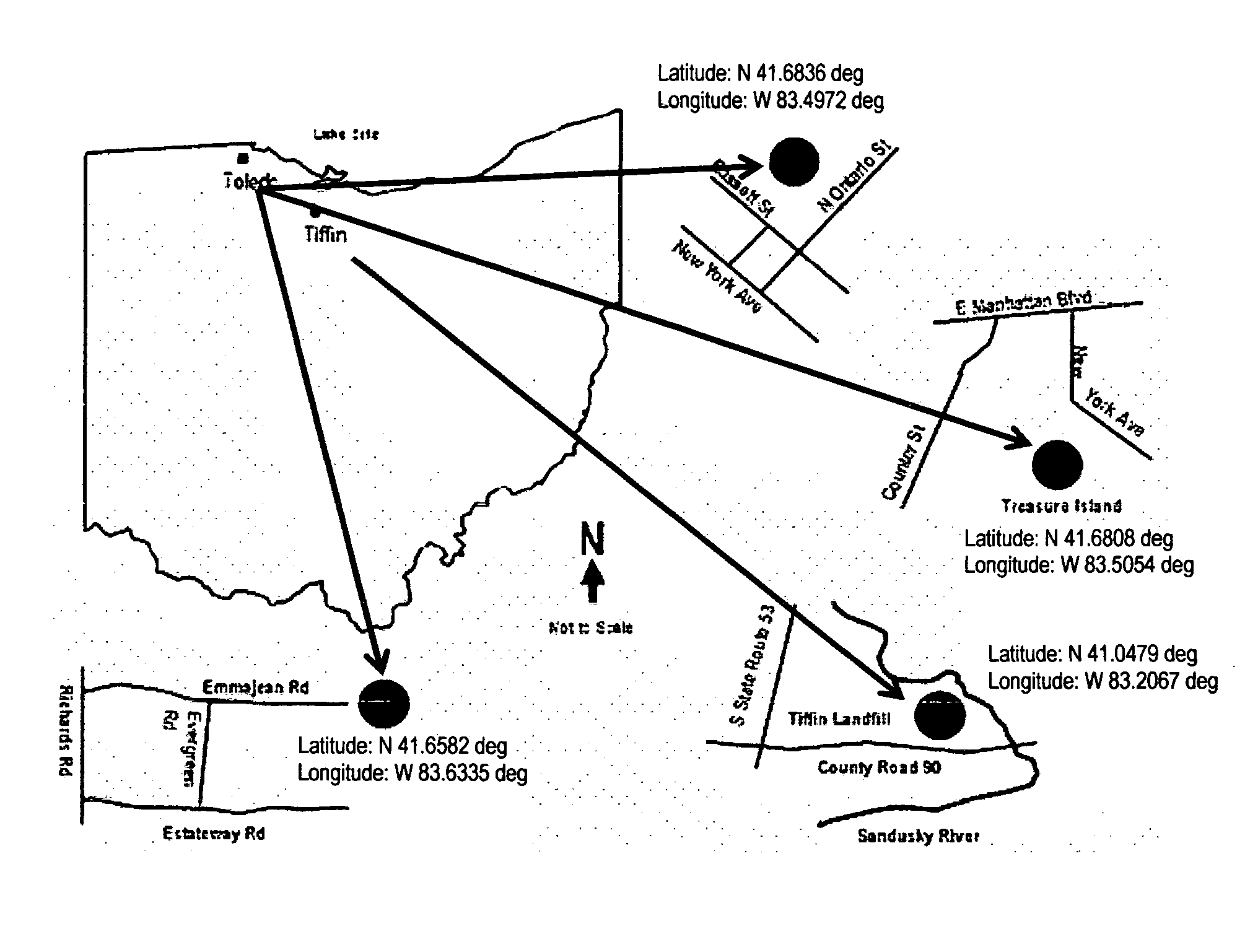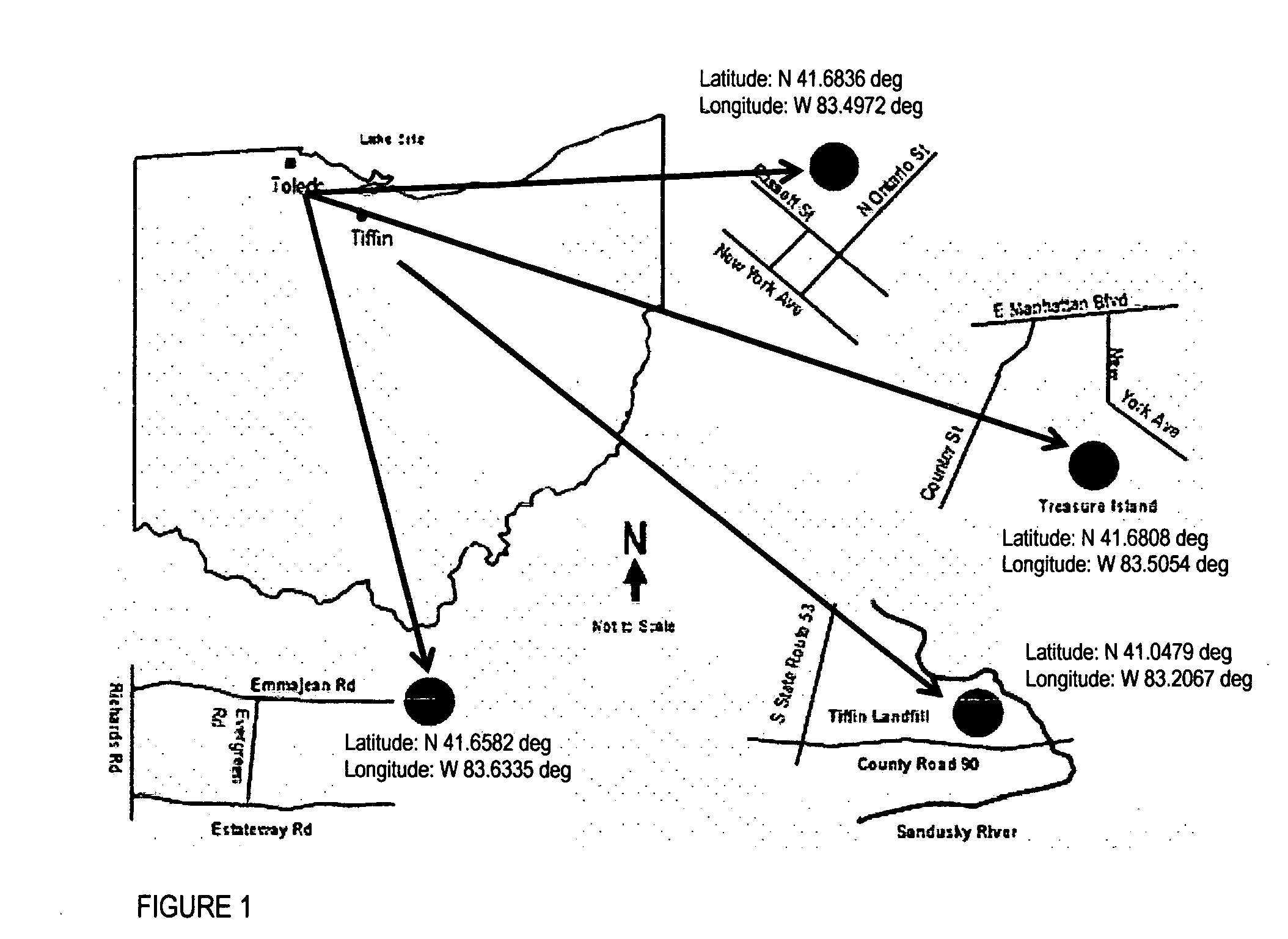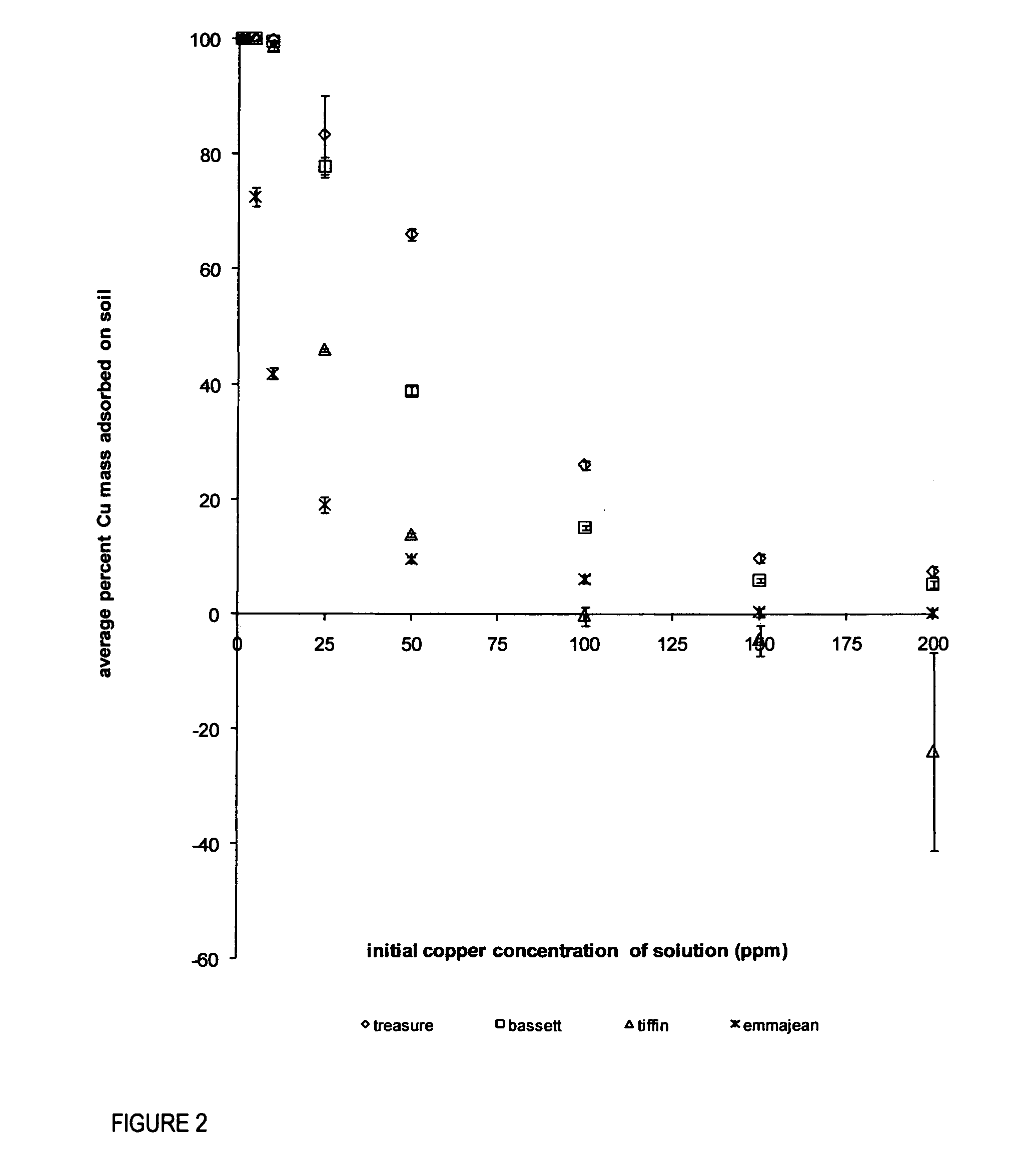Method to evaluate plants and soils to optimize conditions for phytoremediation
a technology of phytoremediation and plant soil, applied in the field of environmental engineering, can solve the problems of wasting decades in the removal of contaminant, and achieve the effects of saving financial resources, low installation and maintenance costs, and less cos
- Summary
- Abstract
- Description
- Claims
- Application Information
AI Technical Summary
Benefits of technology
Problems solved by technology
Method used
Image
Examples
Embodiment Construction
[0047]Historical Review of the Sites
[0048]2.1.1 Treasure Island Dump
[0049]Treasure Island Dump, a municipal and industrial waste dump, has a footprint of 5.3 hectares and lies adjacent to the 9.3 hectare Manhattan Dump (FIG. 1). Treasure Island stopped receiving waste in 1968 (Mannik & Smith, 2006) and is currently listed as a Super Fund Site (USEPA, 2000).
[0050]In 1981, Owens-Illinois, Inc. and Libbey Plant 27, a glass manufacturing plant, submitted a CERCLA Notification of Hazardous Waste Site (103[c]) form listing unknown quantities of arsenic and heavy metals at the site. In 1993, a screening site inspection was conducted by PRC Environmental Management, Inc. Groundwater, surface water and sediment samples were tested to determine the presence and concentrations of contaminants. Semi-volatile organic compounds, pesticides and heavy metals were confirmed at the site (Mannik & Smith, 2006).
[0051]The City of Toledo acquired Treasure Island in the mid 1990's and had placed a 6 to 12...
PUM
 Login to View More
Login to View More Abstract
Description
Claims
Application Information
 Login to View More
Login to View More - R&D
- Intellectual Property
- Life Sciences
- Materials
- Tech Scout
- Unparalleled Data Quality
- Higher Quality Content
- 60% Fewer Hallucinations
Browse by: Latest US Patents, China's latest patents, Technical Efficacy Thesaurus, Application Domain, Technology Topic, Popular Technical Reports.
© 2025 PatSnap. All rights reserved.Legal|Privacy policy|Modern Slavery Act Transparency Statement|Sitemap|About US| Contact US: help@patsnap.com



